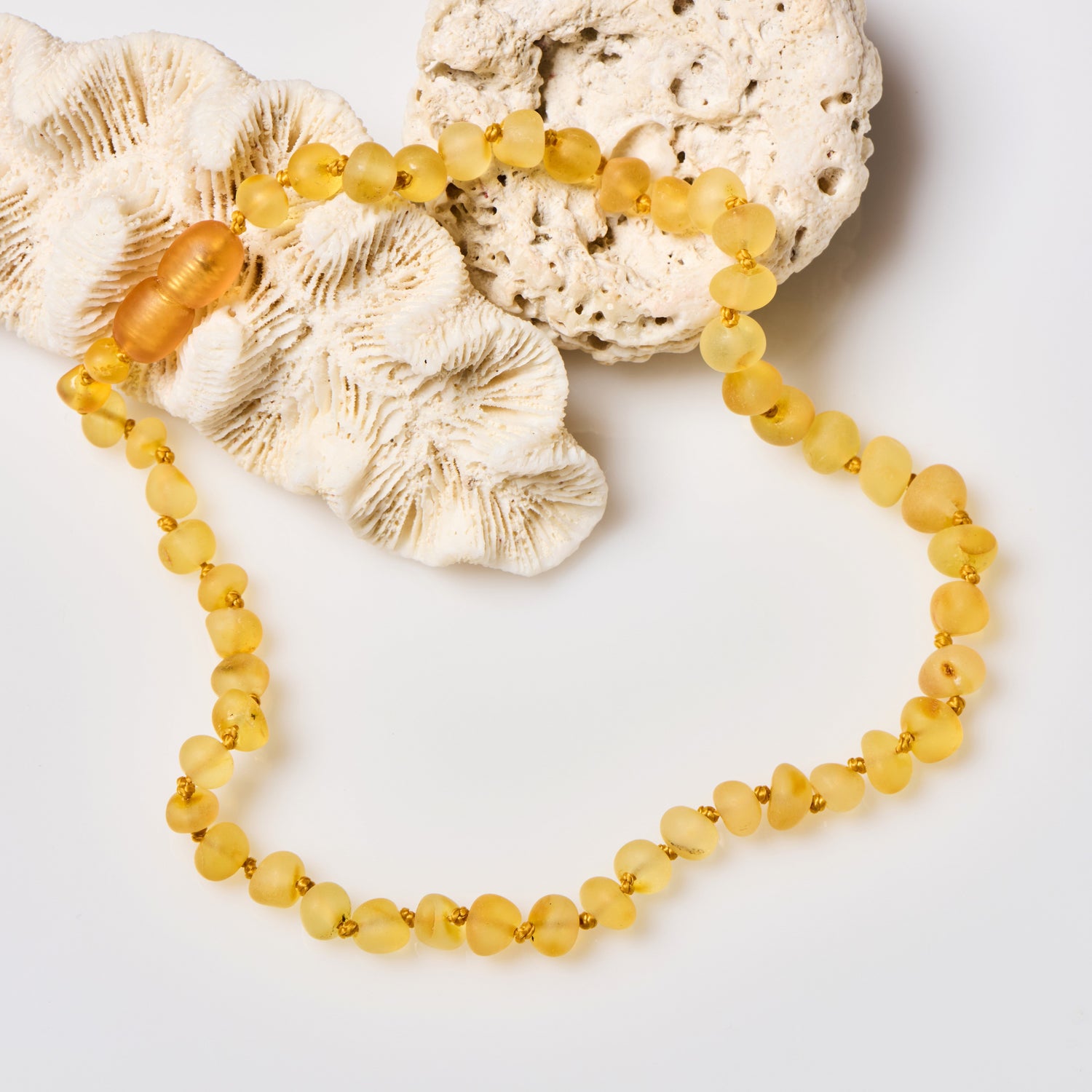Amber is one of the most popular teething remedies for modern parents but what is amber? Does it actually work on teething pain for infants? To find out this and everything else you need to know about using amber for babies, take a look at the following 3 important factors regarding amber and infants.
Amber: What it is and what it isn’t:
Firstly, amber is not a rock, gemstone, or any type mineral. Despite it’s polished rock-like appearance, amber is actually ancient tree resin which has become fossilized over millions of years. Amber is harvested from many areas around the world, although the Baltic region is currently the most popular due to the amount of amber that washes and turns up in the region.

Why amber works for teething pain:
Amber itself does not work to reduce teething pain--it’s a special substance inside the amber called succinic acid. When amber is heated up, it secretes an oil which contains succinic acid. That is how amber teething necklaces and amber teething bracelets actually work: when they are worn against the skin, the warmth from the body causes the amber to secrete the oil, which is then absorbed into the body via the skin. The succinic acid inside the oil begins to work on the infant’s inflamed gums, resulting in a reduction of teething pain and discomfort.
How long before amber takes effect:
The length of time before you will see improvement in your baby’s teething pain will depend on a few factors, including the severity of the pain, their personal body chemistry, and the strength of the succinic acid. It may take anywhere from a few days to a week or so before you see the best results.
Safe usage of amber for teething babies:
One of the most common concerns regarding using amber for teething jewelry is its safety. Amber is safe to use for teething necklaces and bracelets, but like any jewelry, babies and infants should never be left alone when wearing amber jewelry; necklaces and bracelets should also always be removed before the baby goes to sleep. This is because jewelry presents a choking and safety hazard for babies. The amber ‘beads’ used for necklaces and bracelets may become dislodged if your baby decides to chew on them or pull in the jewelry itself, so always make sure your baby does not chew on their jewelry and that you inspect the amber beads every time you use them to ensure they are secure.

Bracelets vs. Necklaces:
Both amber necklaces and amber bracelets are effective at reducing teething pain in babies and infants when they are worn regularly. There is no particular benefit that either type of jewelry has over the other; it will simply depend on your personal preference. Some parents may find that infants are less likely to try to chew amber necklaces because of their short length, whereas bracelets are more accessible to curious infants.
About Powell's Owls:
At Powell's Owls we look to Mother Nature to help families make eco-concious choices for their life. Check out our wide range of amber teething necklaces and amber teething bracelets at: https://powellsowls.com/


